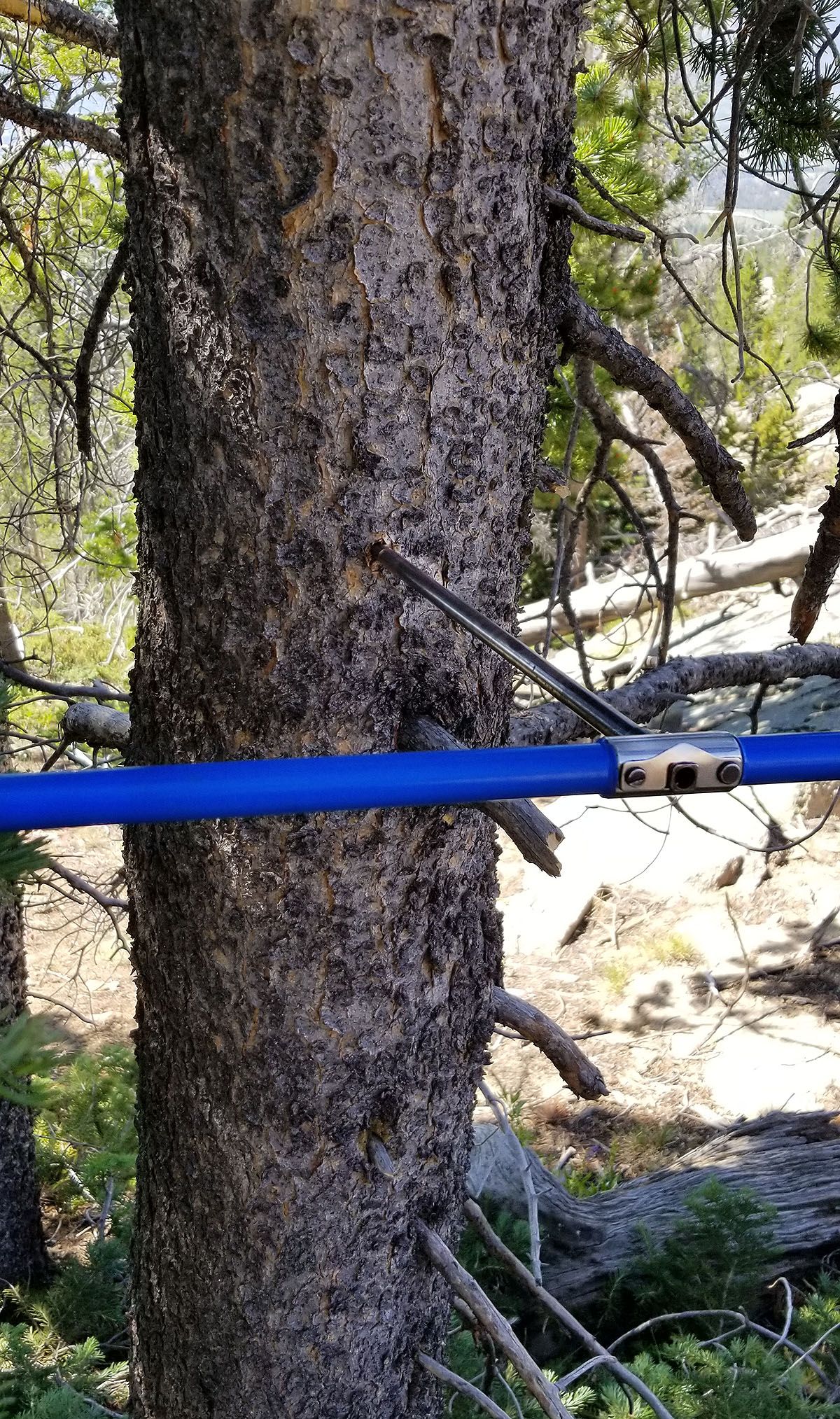Revealing ancient secrets: 1,000 years of tree rings in Yellowstone show recent climate warming trend

Like careful note-takers during the past 1,250 years, Engelmann spruce trees high in the Yellowstone National Park backcountry have left behind a record of how harsh summer temperatures have been.
A new study of living and dead tree ring samples, applying new technology, reveals that the past 20 years in Yellowstone have been the hottest in 1,250 years.
The new temperature record was cross-referenced with the shorter instrumental records of the national park that are available since 1905. The millennium-long record was gathered by a group of researchers from the University of Idaho led by dendrochronologist Karen Heeter.
“When people are dissatisfied with their environment they can get up and move,” Heeter said. “But these trees for the most part are stationary and therefore when they’re really stressed, they record that. They are really excellent keepers of these bits of environmental information.”
Heeter and her crew took tree samples from four sites, two in Yellowstone near Mount Washburn and two near Fantan Lake in the Shoshone National Forest on the east side of the park. Samples were from semi-fossilized remnant trees and living trees.
“They are still laying in these alpine meadows that have been pretty well preserved,” Heeter said. “Spruce, like many conifers, have resins and natural materials that keep them relatively rot-resistant. We were pretty surprised to find these core trees that are a couple hundred years old that are still living. What was very fortuitous is being able to find these old remnant logs.”
Engelmann spruce trees are known to live up to 600 to 800 years. By cross-dating the living trees with the old remnant logs, they were able to compile a record back 1,250 years.
Researchers use a 5-millimeter hand drill to remove a core from living trees and a cross-cut saw or chainsaw is used to obtain samples from dead trees.
The samples are sanded to reveal tree rings, then scanned at high resolution into a computer and studied with a relatively new process called Blue Intensity. Mostly gone are the days of peering at tree rings through a microscope.
“If you think about tree rings as like a bar code,” Heeter said, “essentially you are able to match these bar codes and see where they fit in the timeline.”
Blue Intensity is a relatively inexpensive method developed in Europe to study tree ring density and reveal temperatures represented by certain densities in the rings. Dendrochronologist Robert Wilson at the University of St. Andrews in Scotland, who was not involved in the Yellowstone study, said Engelmann spruce trees are the perfect species for Blue Intensity studies because of “their uniformly light-colored wood,” according to a report published in American Geophysical Union.
Heeter said looking over the tree record of the past 1,250 years, the past 100 years, and in particular, the past 20 years, stood out as an anomaly of an intense warming trend.
“We do see that the 20th and 21st century have a higher propensity of warm years, warm summers specifically,” she said. “It was interesting to go back and see how abnormal this is for the last thousand years.”
Heeter said studying climate trends of the past might help us now by seeing how ecosystems reacted to past trends and what we might expect for the future.
“How did ecosystems respond? That’s where I’m really interested in getting at the historical analogs,” she said. “If our current climate trends are going to continue, what can we expect from predictive modeling?”
Heeter said prior to her work at UI, she worked as a wildland firefighter and was interested in seeing if there was a connection between climate change and widespread fire incidents.
“I worked in wildland fire since 2012,” she said. “We know that Yellowstone had a really large complex in 1988. We’re able to contextualize the climate of 1988 associated with this really severe fire behavior within the last 1,200 years. We’re able to see the consequences of this type of abnormal climate.”
The tree-ring study has been an annual summer project for the past four years called the North American Dendro Ecological Field Week and funded by the National Science Foundation. The latest findings were published in Geophysical Research Letters, a journal put out by the American Geophysical Union. Heeter hopes other scientists will apply the Blue Intensity technology across North America and see what it reveals.
“What I’ve done is just one small piece of the puzzle in one geographic area,” Heeter said. “It would be really interesting to see how these trends in modern climate are contextualized across space and time.”
UI researchers are headed to a study site next month near Trapper Peak outside of Missoula, Mont., to sample subalpine larch trees.
“We’ve got a living chronology from that site that goes back to about 400 years,” Heeter said. “We have a couple of remnants that date back to 1300.”